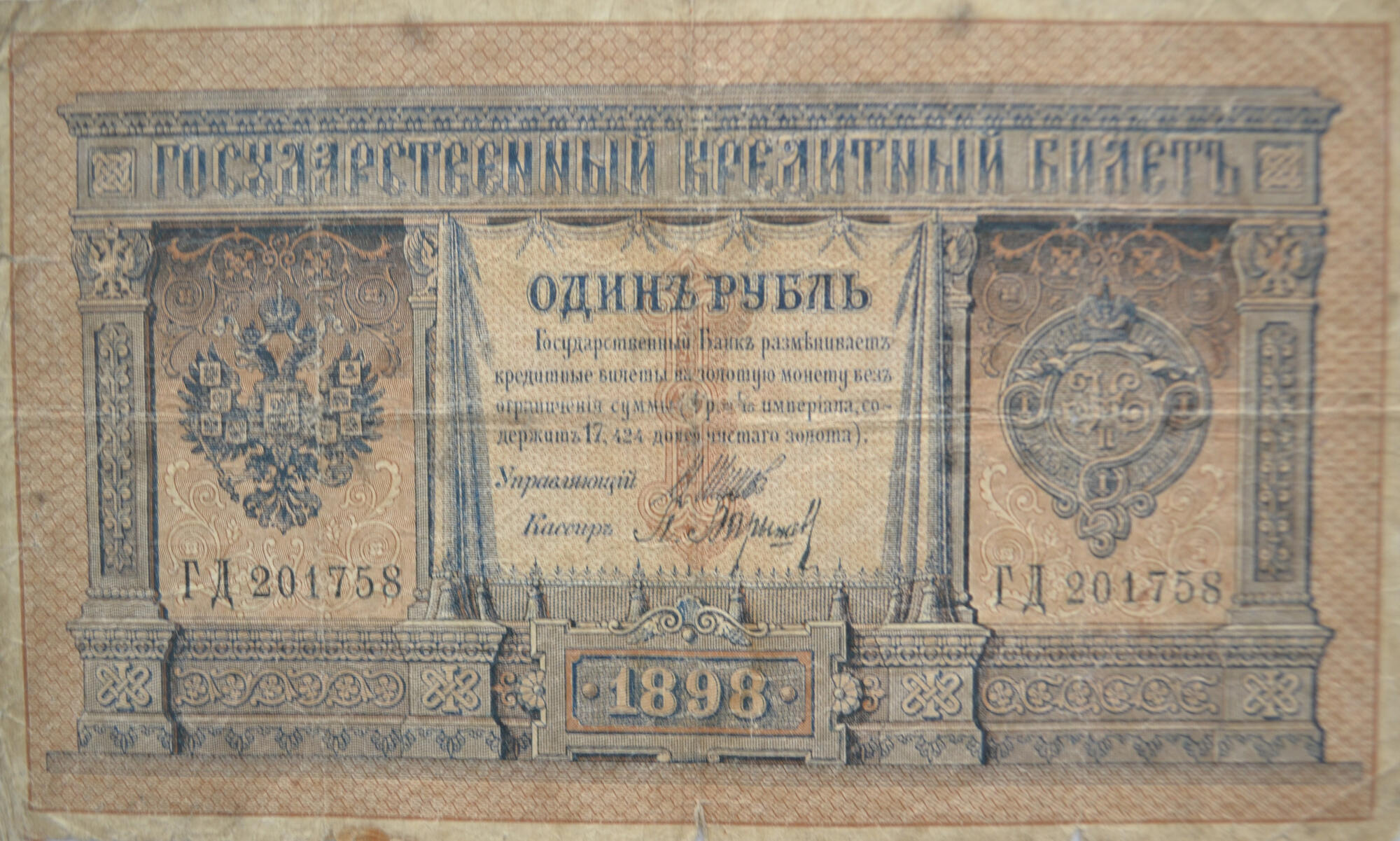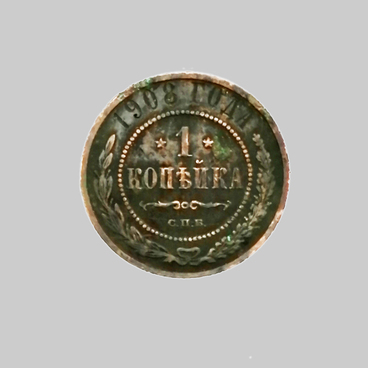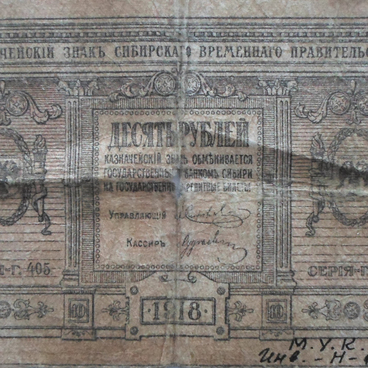The numismatic collection of the Karasuksky Regional Museum holds a one ruble paper banknote. It was issued in 1898 at the Expedition of Storing State Papers - the only establishment in the Russian empire which had the right to issue securities, stamped paper and banknotes. These government-issued credit notes came into use after the currency reform lead by Sergei Witte. At the same time, the gold ruble containing 0.774 grams of pure gold became the country’s main currency unit. One ruble could pay for around two pounds of butter or four dozen eggs. A minor official could earn 45 rubles a month.
The banknote has the inscription “National Bank Note”, and the 1883 small state coat of arms is positioned lower down on the left. It was designed in 1883, during the reign of Tsar Alexander III, by artists Alexander Fadeyev. Tsar Nicholas II’s royal cipher is printed on the right. The banknote also has an explanatory annotation: ‘The State Bank exchanges credit notes for gold coins without restrictions for the amount exchanged. One ruble = 1/15 imperial, containing 17.424 shares of pure gold.’ This meant that the value of the banknote was equal to a gold coin.
The 1883 small state coat of arms was also printed on the note’s reverse. An extract from Russian law was also added from 14 November 1897 onwards: “1. The exchange of State Credit Notes for gold coins is guaranteed by the whole state property. 2. State credit notes are in circulation throughout the Empire on a par with gold coins. 3. Perpetrators of credit note forgery will be deprived of all property rights and sent to hard labor.” Water marks were also printed on the banknote: two types of triangles which came together to form diamond shapes, or “dark squares”.
Other denominations besides the new one ruble banknote were issued in 1898, including 3, 5, 10, 100 and 500 ruble notes. The 1 and 3 ruble notes were the same as the 1887 design, and the 5 and 10 ruble notes were the same as the 1895 design 5 ruble note and the 1894 design 10 ruble note. Only the inscription on the reverse was changed, with the addition of the law excerpts.
The 1898 design of credit notes only started to be issued to State Bank offices and branches in 1900. The issuance of the new ruble banknotes was only allowed only if there were no old bills left in the branch. The date on the banknotes remained unchanged, regardless of the year they were actually issued. The total circulation of the notes between 1898 and 1915 amounted to 199 million notes.
The banknote has the inscription “National Bank Note”, and the 1883 small state coat of arms is positioned lower down on the left. It was designed in 1883, during the reign of Tsar Alexander III, by artists Alexander Fadeyev. Tsar Nicholas II’s royal cipher is printed on the right. The banknote also has an explanatory annotation: ‘The State Bank exchanges credit notes for gold coins without restrictions for the amount exchanged. One ruble = 1/15 imperial, containing 17.424 shares of pure gold.’ This meant that the value of the banknote was equal to a gold coin.
The 1883 small state coat of arms was also printed on the note’s reverse. An extract from Russian law was also added from 14 November 1897 onwards: “1. The exchange of State Credit Notes for gold coins is guaranteed by the whole state property. 2. State credit notes are in circulation throughout the Empire on a par with gold coins. 3. Perpetrators of credit note forgery will be deprived of all property rights and sent to hard labor.” Water marks were also printed on the banknote: two types of triangles which came together to form diamond shapes, or “dark squares”.
Other denominations besides the new one ruble banknote were issued in 1898, including 3, 5, 10, 100 and 500 ruble notes. The 1 and 3 ruble notes were the same as the 1887 design, and the 5 and 10 ruble notes were the same as the 1895 design 5 ruble note and the 1894 design 10 ruble note. Only the inscription on the reverse was changed, with the addition of the law excerpts.
The 1898 design of credit notes only started to be issued to State Bank offices and branches in 1900. The issuance of the new ruble banknotes was only allowed only if there were no old bills left in the branch. The date on the banknotes remained unchanged, regardless of the year they were actually issued. The total circulation of the notes between 1898 and 1915 amounted to 199 million notes.



